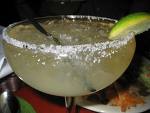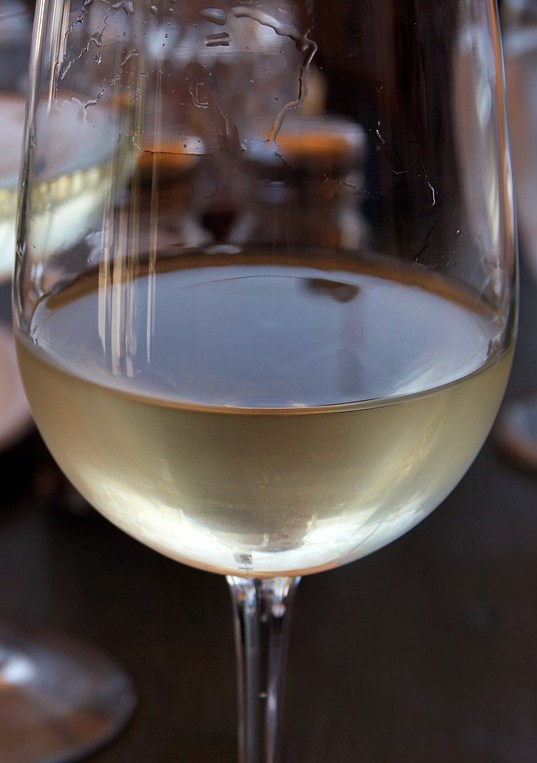 You may have seen one of the fairly recent articles written on the Project Genome wine study arranged by Constellation Wines, U.S.. As far as I can tell, the goals of the project are: first, help retailers and restaurateurs understand where wine consumers are coming from (you know, in terms of their head space or gut when they go to make a purchase); and second, use that information to make their wine-buying experience a bit more user-friendly. I like the idea... in theory.
The initial study (of two) considered what motivated (3500) wine consumers. The researchers were able to group folks into one of six categories: Enthusiasts (12%); Satisfied Sippers (14%); Savvy Shoppers (15%); Traditionalists (16%); Image-Seekers (20%); and Overwhelmed (23%).
You may have seen one of the fairly recent articles written on the Project Genome wine study arranged by Constellation Wines, U.S.. As far as I can tell, the goals of the project are: first, help retailers and restaurateurs understand where wine consumers are coming from (you know, in terms of their head space or gut when they go to make a purchase); and second, use that information to make their wine-buying experience a bit more user-friendly. I like the idea... in theory.
The initial study (of two) considered what motivated (3500) wine consumers. The researchers were able to group folks into one of six categories: Enthusiasts (12%); Satisfied Sippers (14%); Savvy Shoppers (15%); Traditionalists (16%); Image-Seekers (20%); and Overwhelmed (23%).
I am dying to know what questions they asked and how they came up with these various categories et. al.. I'm also curious how consumers who aren't thinking about wine 24-7 feel about them (hence my post!). For me, they don't really work, both in terms of myself and in terms of the folks I chat with at the shop and during my tastings.
Nevertheless, a lot of hoopla has resulted because the largest consumer group (23%) fell into the "overwhelmed" category. These folks are said to be those that like to drink wine but rely on information readily available when they go to make their purchase. If no such information is available - in print or through a knowledgeable store clerk/sommelier/waiter - they get flustered and flee.
It seems everyone (in the media) is talking about using this 23% to leverage some kind of revolution in wine accessibility. The idea is that if we (in the industry) tell you what a wine is going to taste like, you'll be a happier, more savvy shopper. In theory, they may be on to something. But my experience tells me that you can't just tell someone what a wine will taste like, in person or on a shelf-talker or by giving it 90+ points. Wine is history. Wine is local culture, flavors, cuisine, terroir, and varietals. Wine is an art. And, wine is a very personal, individual experience. That's what makes it special.
As Alice Feiring says, otherwise "wine would be another beverage, a soft drink, something you could flick a switch and come out of a faucet."
My advice? If you're new to this game or stuck in a rut or find yourself overwhelmed, pull yourself up by your boot straps, grab a bottle and then taste, discuss and even Google it! Just be sure to savor the full experience of it!
Do you find yourself often "overwhelmed"? How would you characterize your buying?
 As my hectic, challenging weekend wrapped up, I realized a) I hadn't a thing in the fridge to whip together a meal and b) I needed something VERY comforting. A turkey burger and beer at my favorite local jaunt would suit me perfectly, so we headed off in that direction.
A wine author I've read in the last year (but can't remember which one, apologies!) wrote about wine people in the context of "Adventure-Seekers" and "Comfort-Seekers". The author believed people seeking out wine pretty much fall into either one of these two categories. I think I have my moments dabbling in each, depending on my mood or life-context.
As my hectic, challenging weekend wrapped up, I realized a) I hadn't a thing in the fridge to whip together a meal and b) I needed something VERY comforting. A turkey burger and beer at my favorite local jaunt would suit me perfectly, so we headed off in that direction.
A wine author I've read in the last year (but can't remember which one, apologies!) wrote about wine people in the context of "Adventure-Seekers" and "Comfort-Seekers". The author believed people seeking out wine pretty much fall into either one of these two categories. I think I have my moments dabbling in each, depending on my mood or life-context.

 You may have seen one of the fairly recent
You may have seen one of the fairly recent  are wine curious and food aficionados (just like me). So after such a great weather weekend here in Boston I woke up rejuvenated and eager to hear what the others had been up to on a rare holiday off and - most importantly - what they ate and drank. Almost immediately I learned my coworker had also broken out her Weber - except she not only had thrown buffalo meat on the fire, but also pulled out a bottle of
are wine curious and food aficionados (just like me). So after such a great weather weekend here in Boston I woke up rejuvenated and eager to hear what the others had been up to on a rare holiday off and - most importantly - what they ate and drank. Almost immediately I learned my coworker had also broken out her Weber - except she not only had thrown buffalo meat on the fire, but also pulled out a bottle of  Of course it doesn't hurt that working at the shop we're always tasting new
Of course it doesn't hurt that working at the shop we're always tasting new  Were you one of the many Boston-area
Were you one of the many Boston-area  So here's my latest evidence... Last Thursday night I wanted a nice glass of something "comforting" with my dinner. I had a bottle of a baby (e.g. $10) 2005 Bordeaux in my wine fridge I knew would scratch the itch perfectly. I unscrewed the cap (yep! a screw cap, so no fear of a
So here's my latest evidence... Last Thursday night I wanted a nice glass of something "comforting" with my dinner. I had a bottle of a baby (e.g. $10) 2005 Bordeaux in my wine fridge I knew would scratch the itch perfectly. I unscrewed the cap (yep! a screw cap, so no fear of a  As we were putting up more "shelf talkers" the other day in the shop, I started thinking about my earliest adventures wandering around my local wine shop. I was too self-conscious to ask for help but I kept seeing all of these "cute" little info cards popping up along the shelf edge "talking" about the wine. They would give wine notes like:
As we were putting up more "shelf talkers" the other day in the shop, I started thinking about my earliest adventures wandering around my local wine shop. I was too self-conscious to ask for help but I kept seeing all of these "cute" little info cards popping up along the shelf edge "talking" about the wine. They would give wine notes like: I love Gary because he "gets" it. Everyday smells and tastes really do come through in a wine. You just have to stop and smell (and taste) the vino to pick those out; and when you do, your wine tasting experience is taken to a whole new level.
I love Gary because he "gets" it. Everyday smells and tastes really do come through in a wine. You just have to stop and smell (and taste) the vino to pick those out; and when you do, your wine tasting experience is taken to a whole new level. In part I'm inspired by last week's discussion on
In part I'm inspired by last week's discussion on  If you’ve had a chance to check out my
If you’ve had a chance to check out my  The fact that each vintage (nay, bottle?) produces different results, technology is always improving and techniques are always evolving means I’ll never be satiated, either. Yippee!
The fact that each vintage (nay, bottle?) produces different results, technology is always improving and techniques are always evolving means I’ll never be satiated, either. Yippee!